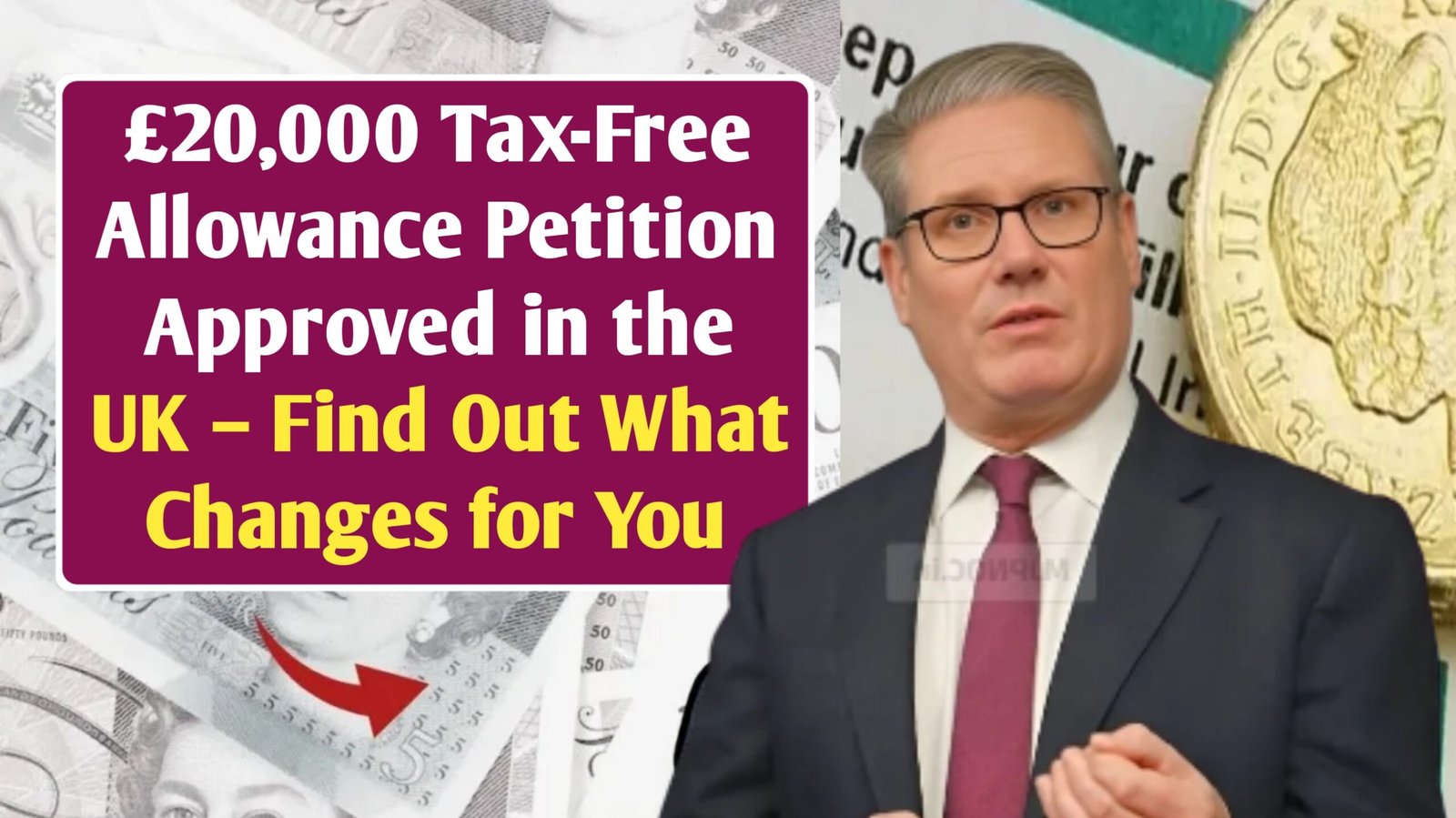The UK’s tax system affects millions of workers, pensioners, and small business owners every year. When news breaks about a potential increase to the personal tax-free allowance, it instantly captures public attention. The recently approved petition to raise the allowance to £20,000 has ignited widespread discussion. While final details may evolve, understanding how such a change could impact your finances is essential. This article explores what a £20,000 tax-free allowance means, who benefits, and what actions you can take to prepare.
What Is a Tax-Free Allowance?
The tax-free allowance (also known as the Personal Allowance) is the amount of income you can earn each year before you start paying income tax. In recent years, the allowance has been around £12,570 for most people. An increase to £20,000 would mark a significant jump, potentially saving thousands of pounds in income tax annually. This is particularly important for lower and middle-income earners, many of whom feel squeezed by rising living costs.
Why Was the Petition Launched?
Petitions gain traction when people feel that existing policies no longer meet their needs. In this case, campaigners argued that wages have not kept up with inflation, and higher taxes are eroding disposable income. The £20,000 threshold aims to restore balance by letting workers keep more of what they earn. By approving the petition, policymakers signal that they recognise the financial pressures households face across the UK.
How the £20,000 Allowance Could Work
If implemented, the new allowance would mean the first £20,000 of your income each year is tax-free. For someone earning £30,000 annually, only £10,000 would be taxable, significantly reducing the income tax bill. This could also shift how employers handle payroll, how benefits are calculated, and how self-employed individuals file their returns. The exact rules would depend on the final legislation, but the principle is simple: more take-home pay.
Who Stands to Benefit the Most
This change would particularly benefit workers on low to moderate incomes, part-time employees, and pensioners with additional sources of income. Self-employed people and small business owners may also see major gains, especially those operating close to the tax threshold. Higher earners could benefit too, but the effect might be capped depending on how the government structures higher-rate thresholds.
Impact on Pensioners
Many pensioners supplement their state pension with savings, investments, or part-time work. A higher tax-free allowance would mean less of that extra income is taxed, increasing financial security. Pensioners who already rely on every pound for living costs could find some much-needed relief. However, it’s important for pensioners to understand how the change interacts with pension credit, savings income, and other tax rules.
Potential Effects on the Economy
Increasing the personal allowance could stimulate consumer spending because people have more disposable income. This may boost local businesses and services. However, critics worry about the impact on government revenue and whether other taxes might rise to make up for the shortfall. Balancing these effects will be a key challenge for policymakers as they move forward with the proposal.
Steps You Can Take to Prepare
Although details are still developing, you can take some practical steps now. Review your current income and tax code to see how much you pay. If you’re self-employed, consider how the new threshold could change your estimated tax payments. Pensioners should speak with their financial advisers about how it could affect their retirement income. By planning early, you can make the most of any new allowances.
Possible Timeline for Implementation
Petitions do not automatically change the law. After approval, the government reviews proposals, debates them in Parliament, and then may introduce new legislation. If the £20,000 allowance becomes law, it might take effect from the start of a new tax year, typically 6 April. Keeping an eye on official HMRC updates will help you know exactly when the changes begin.
How to Stay Informed
Government websites, reputable financial news outlets, and HMRC updates will provide official details as they are released. Avoid relying solely on social media rumours. Signing up for newsletters from trusted financial advisers or tax professionals can help you stay ahead. For pensioners, organisations like Age UK and Citizens Advice can offer tailored guidance.
Balancing Opportunities and Risks
While a higher tax-free allowance sounds entirely positive, there may be trade-offs. The government could adjust other reliefs, cut spending, or raise indirect taxes to offset revenue loss. This means your overall tax position might not change as much as expected. Keeping a balanced view helps you plan realistically.
Key Takeaways for UK Residents
The approval of the £20,000 tax-free allowance petition marks a pivotal moment in UK tax policy. If implemented, it could dramatically reduce income tax for millions, particularly those on lower incomes and pensioners with supplementary earnings. Yet the details matter. Until legislation passes, it’s wise to stay informed, review your finances, and seek advice to ensure you’re ready.
Conclusion
A £20,000 tax-free allowance represents a major shift in how the UK treats personal income tax. For households under financial strain, it could offer meaningful relief. For the wider economy, it could encourage spending but also create fiscal challenges. By understanding what’s proposed, who benefits, and what steps to take now, you’ll be better prepared for whatever changes come next.
